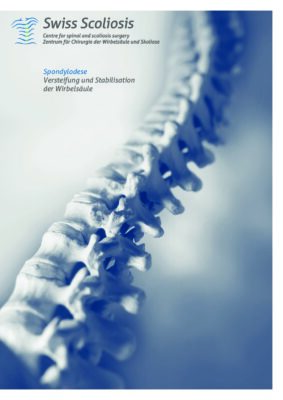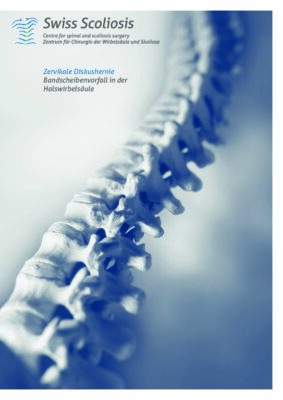Spinal Fusion (Spondylodesis)
Spondylodesis refers to a stiffening of any part of the spine. It is used as a surgical method, treating different pathologies, such as:
- Heavy, degenerative alterations
- Instability, caused by injury during a previous operation
- Sliding of vertebrae (Spondylolisthesis)
- Deformations of the spine (scoliosis, kyphosis)
- Tumors, infections
Depending on the pathology at hand, one or multiple parts of the spine’s moving segments are stiffened.
Usually, spondylodesis is performed from the back. Titanium screws are inserted into the vertebrae and attached left and right, using rods. Using this fixation, the misalignment of the spine can be corrected, e.g. a scoliosis or spondylolisthesis. If the quality of the bones is inferior (osteoporosis), the vertebrae can be reinforced with cement to optimise the hold of the screws.
The aim of the operation is an osseous stiffening of a part of the spine in the desired position. The spine has to be stable an balanced at multiple levels for the patient to be pain-free.
Additional interventions are commonly performed during a stiffening of the spine. They include widening of the spinal canal and the eradication of infections or tumor tissue. If necessary, an affected intervertebral disc is removed completely and replaced by a titanium cage.
Apart from the implants, bone tissue is attached and accumulates. It merges with the vertebrae, leading to a continuing, biologically vital stabilisation.


